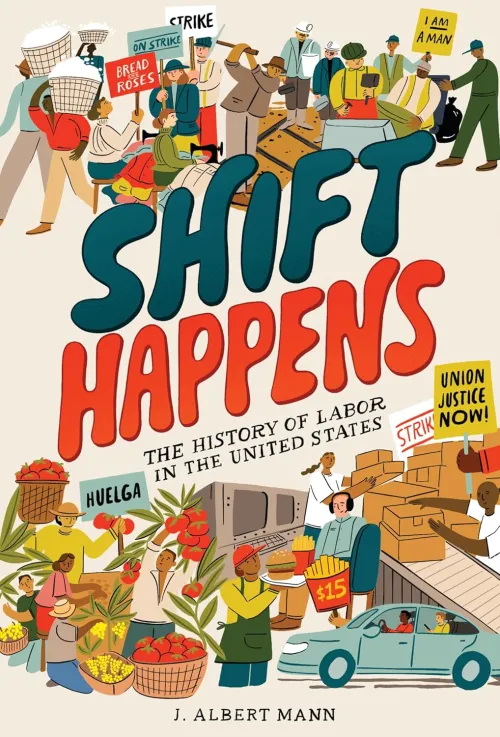Share this book
Your young adult readers are tomorrow’s workers—or may already be part of the labor force right now. Help students connect what they’ve read in Shift Happens with labor unions today by inviting a local union representative, worker advocate, or labor organizer to discuss the work they do and how their experiences fit into the labor movement and its history.
Before the visit, have students read Shift Happens and research the speaker’s union and workplace to generate thoughtful, respectful questions about the experiences of their guest. After the visit, have students reflect in writing on what surprised them, what they learned, and what insights or ideas for their working future the conversation sparked.
Questions for Discussion or Reflective Writing
- What is work and who does it? What is a labor union and why is one needed? How do labor unions promote equity? Why is it important to have labor rights protected?
- Before reading this book, what was your perception of labor unions and what they do? How does what you learned in this book compare to what you’ve been taught about American history? Describe something from this book that surprised you or taught you something you didn’t learn in your own history classes.
- What have unions accomplished that have improved everyday people’s lives? Why is learning about labor rights important? Why do you think it is particularly important for teens to know and understand the history of the labor movement?
- How is the labor movement tied to the current conversation about racial and social justice in the United States? How does concentrated economic power imperil democracy and justice for all? How can unions change that power dynamic? What reasons do people have for being for or against labor unions?
- What are reasons that compel workers to form unions? What strategies do union members use to seek justice and create change? Why does collective action work when individual efforts may fail?
- What factors contribute to today’s labor organizing? How do these differ or not from factors that led to organizing in the past? How do demands, setbacks, and successes of labor movements today compare to historical movements?
Related Resources
Outline of Shift Happens with chapter-by-chapter connection to National Council for the Social Studies themes from J. Albert Mann
Timeline of labor events in Shift Happens side-by-side with government and world events from J. Albert Mann
Teaching Resources from the Labor History Research Project
More Titles to Try
-
Bread and Roses, Too
Katherine Paterson
-
Cesar Chavez: Fighting for Farmworkers
Eric Braun
-
Fight to Win! Heroes of American Labor
Kim Kelly
-
The Mine Wars: The Bloody Fight for Workers’ Rights in the West Virginia Coalfields
Steve Watkins
-
Wobblies! A Graphic History of the Industrial Workers of the World
edited by Paul Buhle and Nicole Schulman
Stay on top of current education news



